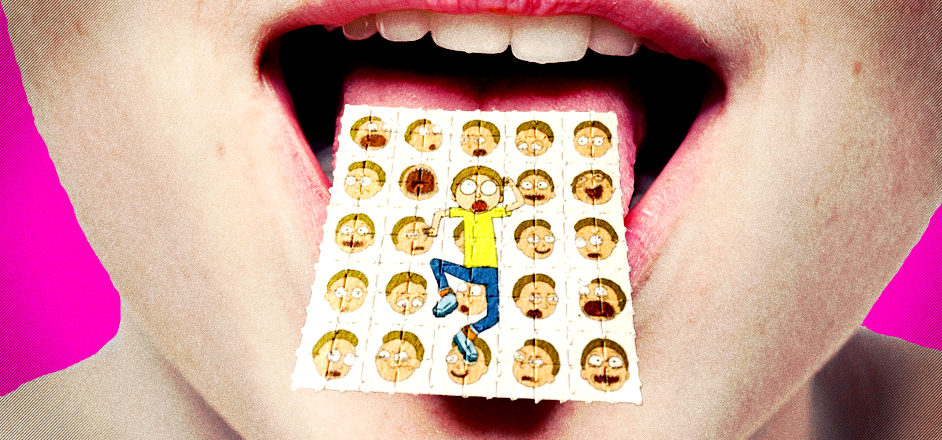Stephen told his buddy about 99 times that he didn’t want any LSD. When his friend asked him for the hundredth time, he reluctantly agreed to to take just a little droplet, and offered his friend his open palm.
“I wasn’t really paying attention, so I didn’t look at my hand before bringing it to my mouth,” Stephen says. “Instead of a single little droplet meeting my tongue, an enormous puddle of liquid flooded my mouth.”
Spitting it out immediately wasn’t enough to save him. In a few hours, Stephen would find himself in the hospital, with both kidneys close to failure. He’d overdosed on LSD, and it’d almost killed him.
Stephen’s not alone. Unwittingly sipping from dosed drinks. Eating some super-potent acid-soaked sugarcubes. Mixing up the baggies of powered LSD and cocaine and accidentally snorting a line of acid. Although it’s really rare, LSD overdoses like these could happen to anyone, really.
Robert Gable, professor of psychology at Claremont Graduate University, has spent his career investigating drug toxicity. On the nerd blog I Fucking Love Science, Gable explains that LSD doesn’t have a reputation for fatal outcomes. “I haven’t come across any cases in which LSD alone could be verified as the cause of death,” he assures us. It’s usually only when acid is mixed with other harmful substances that things get dangerous.
If your dealer is bad enough at his job, there’s the possibility that poisonous additives may have been mixed in with your acid, amplifying its risk and unpredictability. It’s also important to keep in mind that dealers consistently sell different batches with different doses. One dose may leave you feeling stone-cold sober, while another one can make the trees seem like angry octopuses, with every branch a tentacle attempting to strangle you.
However, both inexperienced and seasoned trippers are equally susceptible to overdose. Experienced acid-heads build up an increased tolerance, making it more likely they’ll take a dangerous dosage. Newbies won’t know it can take up to 90 minutes for a dose to make them feel funky, so they’ll take repeated doses to hurry up and start tripping.
In either case, you might have a terrible trip — which could seem like a near-death experience — but doesn’t really bring you anywhere close to death’s door. LSD only requires a teensy tiny quantity to feel its effects, making it much less likely that you’ll ever take a toxic dose.
“The smaller the dose of a substance, the less likely it is to cause physiological death,” Gable says. “And what’s unique about LSD is it’s in micrograms, so it’s much smaller than all the other psychoactive drugs, making death less likely to be caused by LSD than by some other substance.”
That explains why this year, psychedelics were discovered to be among the safest recreational drugs in the world. You’re far more likely to be shoved into the back of an ambulance for meth, synthetic cannabis, cocaine, MDMA, or even alcohol, than for dropping too much acid.
In fact, because so few LSD-induced deaths have occurred, an exact lethal dose of acid is not even known. Best estimates are approximately 1,000 times an effective dose.
Even though it often doesn’t end in organ failure, acid trips can still be hazardous. Overestimating your abilities under the influence of LSD, perhaps attempting to drive or do parkour, probably won’t end well.
Signs of overdose can include physical symptoms like insanely dilated pupils, excessive sweating, rapid heart rate, muscle shakes, and nausea, and mental symptoms like panic attacks, severe depression, and of course, an overwhelming fear of going insane.
Rather than joining in on the tripper’s hysteria and seeking emergency medical attention, most incidents call for making the person feel safe, relaxed and comfortable until the drug wears off.
After all, far more likely than acid making you overdose, is it making you an environmentalist, a better athlete, or a more productive worker.




Leave a Reply